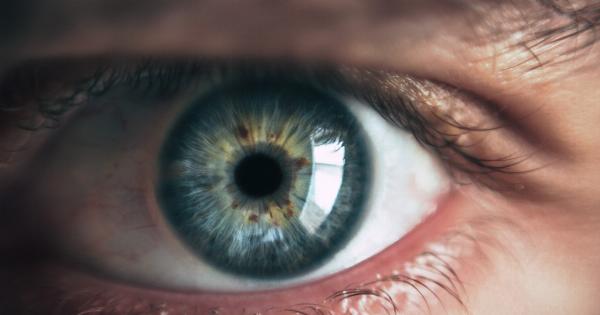Blurred vision is a common condition that affects people of all ages. It is characterized by a lack of clarity of vision, making it difficult to see fine details or focus properly on objects.
Blurred vision can occur in one or both eyes, and can be a symptom of an underlying medical condition. In this article, we will explore the causes of blurred vision and what you can do to prevent and treat it.
1. Refractive errors
Refractive errors refer to any abnormalities in the shape of the eye that cause light to be focused improperly. These errors include nearsightedness, farsightedness, and astigmatism.
Nearsightedness, or myopia, is a condition where distant objects appear blurry while close objects remain clear. Farsightedness, or hyperopia, is a condition where close objects appear blurry while distant objects appear clear. Astigmatism is a condition where the cornea or lens of the eye is irregularly shaped, causing distorted vision at all distances.
These conditions can be corrected with eyeglasses, contact lenses, or refractive surgery.
2. Age-related changes
As we age, the lens of the eye becomes less flexible, resulting in a condition called presbyopia. This condition affects the ability of the eye to focus on close objects, resulting in blurred vision.
Presbyopia can be corrected with reading glasses, bifocals, or contact lenses.
3. Cataracts
Cataracts are a common eye condition that occurs when the lens of the eye becomes cloudy. This cloudiness can cause blurred vision, glare, and difficulty distinguishing colors.
Cataracts can be treated with surgery to remove the cloudy lens and replace it with an artificial one.
4. Glaucoma
Glaucoma is a group of eye conditions that cause damage to the optic nerve, which carries visual information from the eye to the brain. This damage can lead to vision loss and blindness.
Some types of glaucoma can cause blurred vision as well as loss of peripheral vision. Treatment for glaucoma includes medication, laser therapy, or surgery.
5. Diabetes
Diabetes is a chronic disease that affects the body’s ability to regulate blood sugar levels. High levels of blood sugar can damage the blood vessels in the eye, causing a condition called diabetic retinopathy.
This condition can cause blurred vision, floaters, and even blindness. Treatment for diabetic retinopathy includes managing blood sugar levels, medication, and sometimes surgery.
6. Multiple sclerosis
Multiple sclerosis is a neurological condition that affects the central nervous system. It can cause a wide range of symptoms, including blurred or double vision.
Treatment for multiple sclerosis includes medication to manage symptoms and physical therapy to improve mobility.
7. Medications
Some medications can cause blurred vision as a side effect. These medications include antihistamines, antidepressants, and medications used to treat high blood pressure.
If you experience blurred vision while taking a medication, you should speak to your doctor to determine if there is an alternative medication that can be used.
8. Eye infections
Eye infections, such as conjunctivitis or pink eye, can cause redness, itchiness, and blurred vision. Treatment for eye infections may include antibiotics, antiviral medication, or eye drops.
9. Eye injuries
Injuries to the eye, such as a scratch on the cornea or a blow to the eye, can cause blurred vision. Treatment for eye injuries depends on the severity of the injury and may include medication or surgery.
10. Migraine
Migraine headaches can cause a variety of symptoms, including blurred vision, sensitivity to light and sound, and nausea. Treatment for migraines may include medication to manage symptoms or prevent future migraines.





























